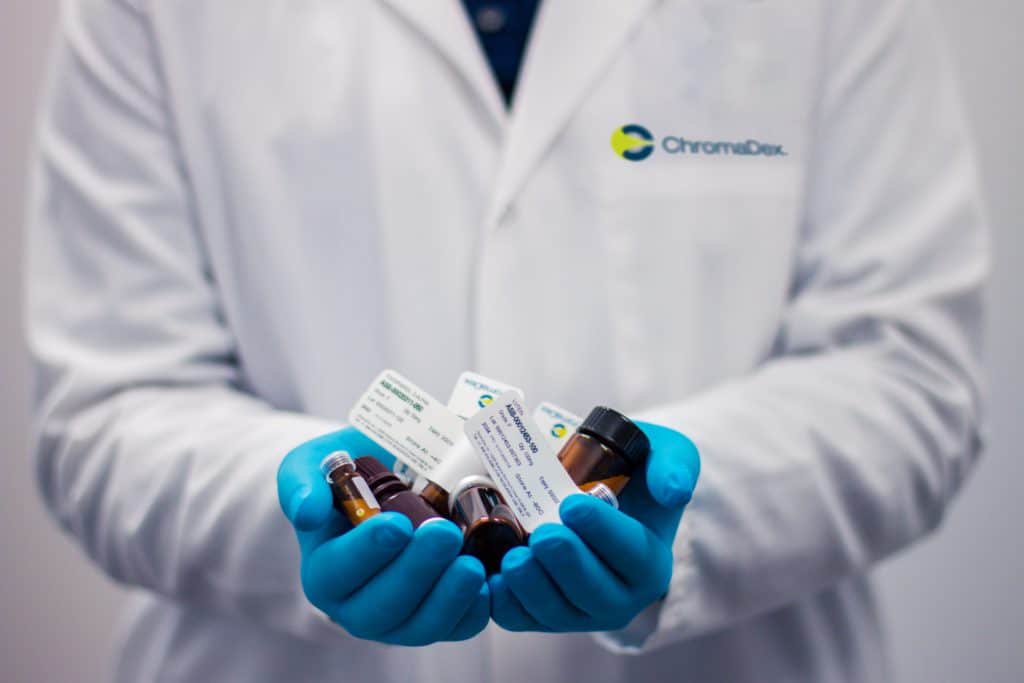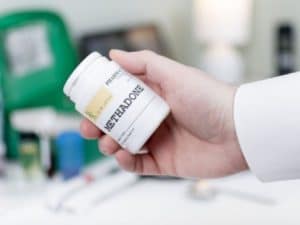
Opiate Detox Treatment: What Happens During Opiate Detox?
If you are caught in the grasp of opiate addiction, it can feel almost impossible to imagine breaking free. However, an opiate detox treatment can

July 27, 2020
Opiate withdrawal is often compared to having a bad case of the flu and can be extremely difficult to get through on your own without professional treatment at an opiate detox center. Detox is the first stage of treatment for opiate use disorder and can help you get safely through withdrawal while facing a reduced risk for complications. Medications are widely used in today’s opiate detox to reduce symptoms and help patients feel more comfortable as they recover from drug dependence.
Here are medications commonly used in opiate detox, and how they work to relieve or reduce withdrawal symptoms and drug cravings.
Methadone has been used for more than 40 years in opiate addiction treatment. This medication is a slow-acting opiate agonist that acts on the same brain receptors as other opioids such as heroin, morphine, and painkillers. Although methadone binds to and activates opioid receptors, this medication effectively reduces drug cravings and withdrawal symptoms without producing euphoria.
Methadone is typically used to help people detox from long-acting opiates such as morphine. It is considered an ideal treatment option for patients who don’t respond well to other medications. Methadone can also be used as a long-term maintenance medication for opiate dependence, whether it be for several years or a lifetime. Patients who want to stop using methadone can have their doses decreased gradually over time to reduce the intensity of withdrawal symptoms.
Though methadone is an effective treatment in opiate detox, this medication does carry the risk for abuse and dependence. For this reason, methadone is only available through approved treatment programs where patients can visit an outpatient clinic daily to receive the medication. When used in an inpatient detox setting, methadone substitution and taper usually take place within 5 to 7 days, offering an 80% retention rate.
Buprenorphine was approved by the FDA in 2002 for the treatment of opiate dependence. Buprenorphine is a partial opiate agonist, and like methadone, it reduces drug cravings and withdrawal symptoms without producing euphoria. Buprenorphine activates opiate receptors less strongly than full agonists like methadone, and as a result, presents a reduced risk for abuse and dependence. Unlike methadone, buprenorphine can be prescribed for at-home use and eliminates the need for daily visits to a specialized treatment clinic—making this option highly convenient for those who live far from methadone clinics or who are motivated to stay abstinent.
Buprenorphine is found to shorten the length of opiate detox, which typically lasts an average of anywhere between 4 and 20 days. This medication may also be used for long-term maintenance and is currently viewed as the gold standard for the management of moderate to severe withdrawal from opiates. Compared with clonidine, patients who use buprenorphine are found to stay in treatment longer and are more likely to complete withdrawal.
Clonidine has been used in opiate detox for more than 25 years. This medication can be used as a symptomatic treatment alongside medicines like nonsteroidal anti-inflammatory drugs that treat specific withdrawal symptoms, but should not be used at the same time as opioid substitution medications like methadone or buprenorphine due to drug interactions and side effects. Clonidine is an antihypertensive drug typically used to treat high blood pressure but can be used to reduce several physical withdrawal symptoms including sweating, vomiting, abdominal cramps, and diarrhea.
Compared with methadone, clonidine produces a higher number of side effects when used in opiate detox, including low blood pressure, drowsiness, and dizziness. However, clonidine is associated with a lower likelihood of post-withdrawal rebound. Compared with buprenorphine, clonidine may not perform as well at reducing retention, heroin use, and withdrawal severity. Additionally, clonidine does not reduce drug cravings, and may not reduce withdrawal symptoms of insomnia, muscle aches, lethargy, and restlessness.
Naltrexone was approved by the FDA in 1984 for the treatment of opiate use disorder. This medication is an opioid antagonist that blocks the effects of opiates to prevent users from experiencing rewarding effects such as euphoria. Naltrexone does not produce sedative effects and does not carry the risk for abuse or dependence.
Naltrexone does not reduce withdrawal symptoms or drug cravings; therefore, this medication isn’t always used by every patient in opiate detox. Naltrexone treats opiate use disorder by reducing the desire to use such drugs due to the way this medication blocks the activation of opioid receptors. Naltrexone is effective at preventing relapse but can trigger sudden and severe withdrawal symptoms if used when opiates are still in a patient’s system.
Naltrexone is available in the form of a long-acting injectable that produces effects for up to several weeks, which makes this medication an ideal treatment option for patients who are unable to visit treatment centers regularly or who experience difficulty with adhering to a daily medication regimen.
In 2018, lofexidine was approved by the FDA as an opiate detox medication. This non-opioid medication can be used for up to 14 days to reduce withdrawal symptoms, but may not completely prevent symptoms.
Lofexidine is an analog of clonidine that reduces the body’s release of norepinephrine—a neurotransmitter believed to play a role in many opiate withdrawal symptoms. Results from clinical trials showed that patients in detox who were treated with lofexidine experienced a reduction in symptoms including abdominal cramps, muscle spasms, rapid heart rate, muscle tension, tearing eyes, and insomnia.
The most common reported side effects of lofexidine are low blood pressure, slow heart rate, sleepiness, sedation, and dizziness. Compared with clonidine, lofexidine produces less sedation and low blood pressure and may improve retention and time to relapse when used with naltrexone.
Benzodiazepines are a class of drugs used to treat anxiety, seizures, and insomnia—the latter of which is usually the most difficult and distressing symptom associated with withdrawal. Benzodiazepines can be highly effective at helping patients get quality sleep during detox; however, the decision to use these drugs as part of detox must be carefully evaluated on a per-patient basis due to the risk for abuse and dependence.
Benzodiazepines increase the risk of physical dependence when used for longer than a few weeks. Patients who have a history of benzodiazepine abuse may not benefit from this therapy, especially in an outpatient treatment setting. In an inpatient or residential opiate rehab setting, patients with insomnia may safely use benzodiazepines while under close supervision.
Summer House Detox Center offers safe, effective opiate detox in Florida just minutes away from the beach. Patients who choose to withdraw from opiates at Summer House will receive medications to reduce and relieve symptoms including drug cravings. The type of medications used in detox will depend on factors such as the severity of dependence, and whether the person is recovering at Summer House or in their home or a sober living facility. All opiate detox treatments are customized for each individual patient and may be modified during treatment as needed for the best outcome.
Patients who choose to recover at Summer House will have access to luxurious, quality amenities including daily housekeeping services, gourmet meals prepared for a 4-star chef, massage treatments, jacuzzi, and much more.
If you are suffering from opiate use disorder and need help, contact Summer House Detox Center today at 800-719-1090 to speak with a qualified addiction specialist. Or, fill out our free insurance verification form to determine whether your treatment at Summer House is covered by your health plan.
If you or someone you know is in need of addiction treatment in West Palm Beach, give Summer House Detox Center a call at 800-719-1090 to schedule a FREE consultation. You can also visit us at 13550 Memorial Highway Miami, FL 33161. We are open 24 hours a day, 7 days a week.
Resources
https://www.ncbi.nlm.nih.gov/pmc/articles/PMC3202507/
https://www.ncbi.nlm.nih.gov/books/NBK310652/

If you are caught in the grasp of opiate addiction, it can feel almost impossible to imagine breaking free. However, an opiate detox treatment can

Detox from opiates can produce withdrawal symptoms ranging from flu-like symptoms and insomnia to irregular heartbeat and anxiety. With symptoms like that, it’s understandable why

Methadone detox is one of the treatments usually provided in rehab centers for opioid addiction. And sometimes, opioid addicts, who are on their way to
For immediate assistance, please call our Admissions Specialists at 800-719-1090.
Speak With A Qualified Addiction Specialist 24/7